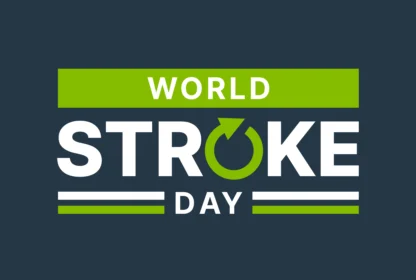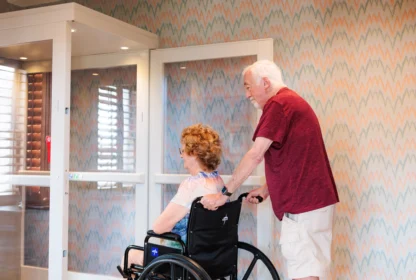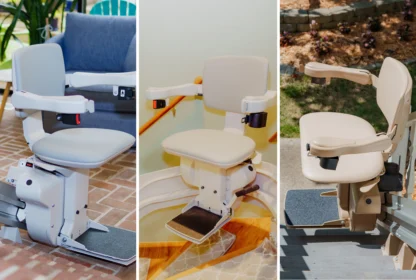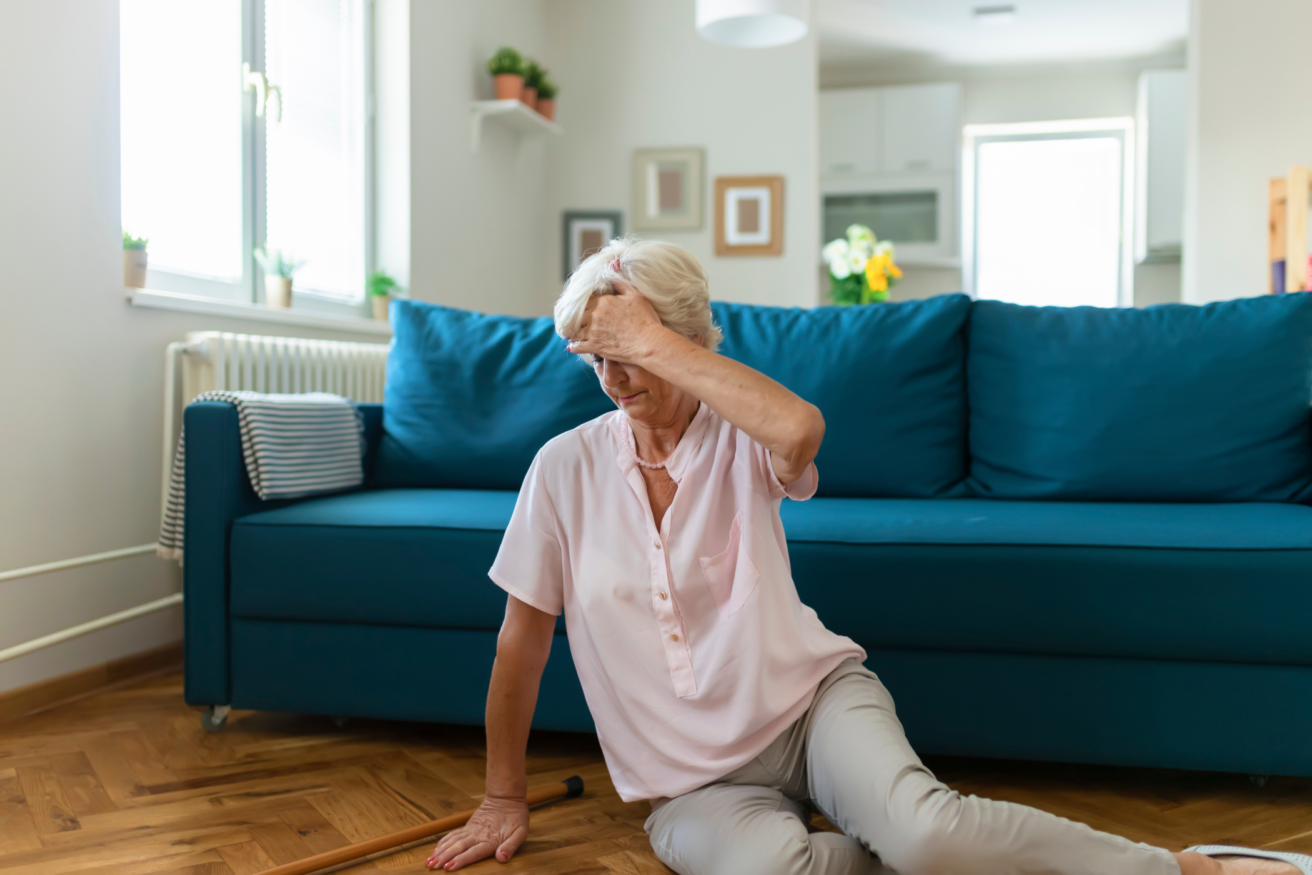
When it comes to taking care of elderly person you love, fall prevention is often a key area of concern, as falls result in more than three million emergency room visits annually. While learning how to prevent a fall can keep the seniors in your life safe, it is important to know that falls can still happen, and creating a plan of action can give you peace of mind.
When learning how to safely lift an elderly person who has fallen, there are many senior safety tips you can follow. Using the proper technique is of the utmost importance as there are several risks associated with incorrect lifting, including both injury to the elderly person and the caregiver. Common caregiver injuries stem from issues with the back, neck, and shoulders that are created when repeating the same lifting motions often, but these can all be prevented with proper education—and preparation. At 101 Mobility, we’re committed to helping ensure the safety of elderly individuals. Read on to learn how to navigate these tricky situations, how to practice proper lifting techniques, and to get tips on the best mobility aids for elderly falls.
Assess the Situation
Once an elderly person has fallen, your instinct may be to rush into action, but it is important not to panic. Taking a step back and allowing time to assess the full situation can prevent further harm and stress. Before you learn how to safely lift an elderly person who has fallen, you should first decide if you are able to help them get up. Sometimes, it is better to call for medical assistance. While you should use your best judgment to decide if they are severely injured or unable to move, calling 911 is likely for the best. If you think it is safe to help them, take a look at their positioning, make a plan of action, and go from there.
101 Mobility Tip: After a fall, consider adding an extra layer of protection. Getting your loved one a medical alert system is a reliable option. This can be a useful tool for elderly fall recovery, as it allows them to call for help if no one is around for the fall, avoiding severe injury and expediting professional care.
Proper Lifting Techniques
Implementing the proper techniques is key to learning how to safely lift an elderly person who has fallen and using a few easy-to-remember guidelines can protect you both from harm. After a fall, follow these lifting techniques for the elderly:
- Start communicating: You’ll want to create an open line of communication before, during, and after the lifting occurs. Talk to the fallen senior calmly, see if they feel any discomfort, and use this information to help decide how to move forward.
- Get into the proper position: In order to make lifting easier, you’ll want to help shift the fallen individual into a sitting position. This can be done by putting an arm around their back and sliding them into it. Getting yourself into the proper position is also important to success and you’ll want to kneel down to try and minimize the strain on your back.
- Get ready to lift: Keep your knees bent and try not to bend your back and waist. Rely on your legs and engage your core to lift, avoiding strain, pull, and awkward positioning. This is crucial when it comes to avoiding injury.
- Begin to lift: If the fallen person has some mobility and is able to help themselves stand, they can place their arm around your neck for support. Then, you can slide your arms around their waist and knee to add extra stability and comfort, pulling them into an upward position.
- Complete the lift: If you need extra support, have them use furniture or a wall to get grab onto. Once you’ve moved them to a standing position, make sure they’re stable and do not seem like they are about to fall again. Have them rest and regain their composure before walking or continuing to move and remember to keep an eye on them for the next couple of days, seeking medical help if any lingering issues arise.
Looking for a few additional tips on how to safely lift an elderly person who has fallen? When possible, avoid lifting alone and rely on another person’s help if available. You can also leverage tools like a transfer belt or lift assist device. Plus, stay up-to-date on elderly care techniques, take courses on safe lifting, learn more about elderly fall recovery, and explore additional fall prevention resources.
When to Use Mobility Aids
While each individual situation is different, there are times when exploring mobility aids for elderly falls might be right for you and the senior in your care. If the falls have become frequent, the elderly person feels unstable on their feet, or if they are suffering from specific mobility-related health problems, it may be time to seek additional help. Falls that occur on staircases are often the most dangerous, so it may be worth looking into products that eliminate the need to traverse the stairs. This can include stairlifts, ramps, and vertical platform lifts. You know your loved one’s situation best. It might take time to find the right mobility aid and remember, always consult with a healthcare professional.
Be prepared by stocking up on the tools you may need down the line now. Explore our accessibility devices or reach out to us for extra support.
Preventing Future Falls
In addition to learning how to safely lift an elderly person who has fallen, there are many simple day-to-day changes you can make in your home and senior safety tips you can follow to help prevent elderly falls. In order to make the environment a bit safer and provide extra points of stability, mobility aids for elderly falls, such as grab bars, can be installed. These bars have several uses and can be applied almost anywhere in the home, including the bathroom, where most falls occur. These tools can make your home more accessible and give the senior in your life more independence as well. Explore 101 Mobility’s grab bar options. In addition to making small changes, there are several other senior safety tips to keep in mind. Times of movement are often particularly dangerous and using tools to manage these moments can help reduce fall risk. Here are some options you can explore:
- Lift chairs: A lift chair looks like an average reclining chair, but is actually a piece of medical equipment. It contains a lifting system that can help the user get into a standing position with the touch of a button. These are a great option for those with mobility and balance issues as using a lift chair can reduce the struggle that often comes with standing up—helping avoid a fall in the process. It’s also a trusty tool for caregivers as it lessens the strain that comes with helping someone move. Explore our high-quality lift chairs and learn more about their benefits.
- Transfer belts: This tool, also known as a mobility belt, can be pivotal when it comes to helping elderly individuals transfer between positions. When in use, the senior wears the belt and the caregiver will use its grips or loops to grab while helping with movement. This can be an easier way to move someone from a wheelchair to a bed, or to simply switch into a standing position.
- Sit-to-stand devices: These tools, also known as sit-to-stand lifts or transfer assist devices, also help reduce strain on a caregiver by allowing an elderly person to stand up in a more natural and comfortable manner. Check out our Human Care Levanto that makes it easy to sit, stand, dress, use the restroom, and more. Or, opt for our simple Raizer by Liftup, with both manual and powered models, for quicker assistance after a fall occurs.
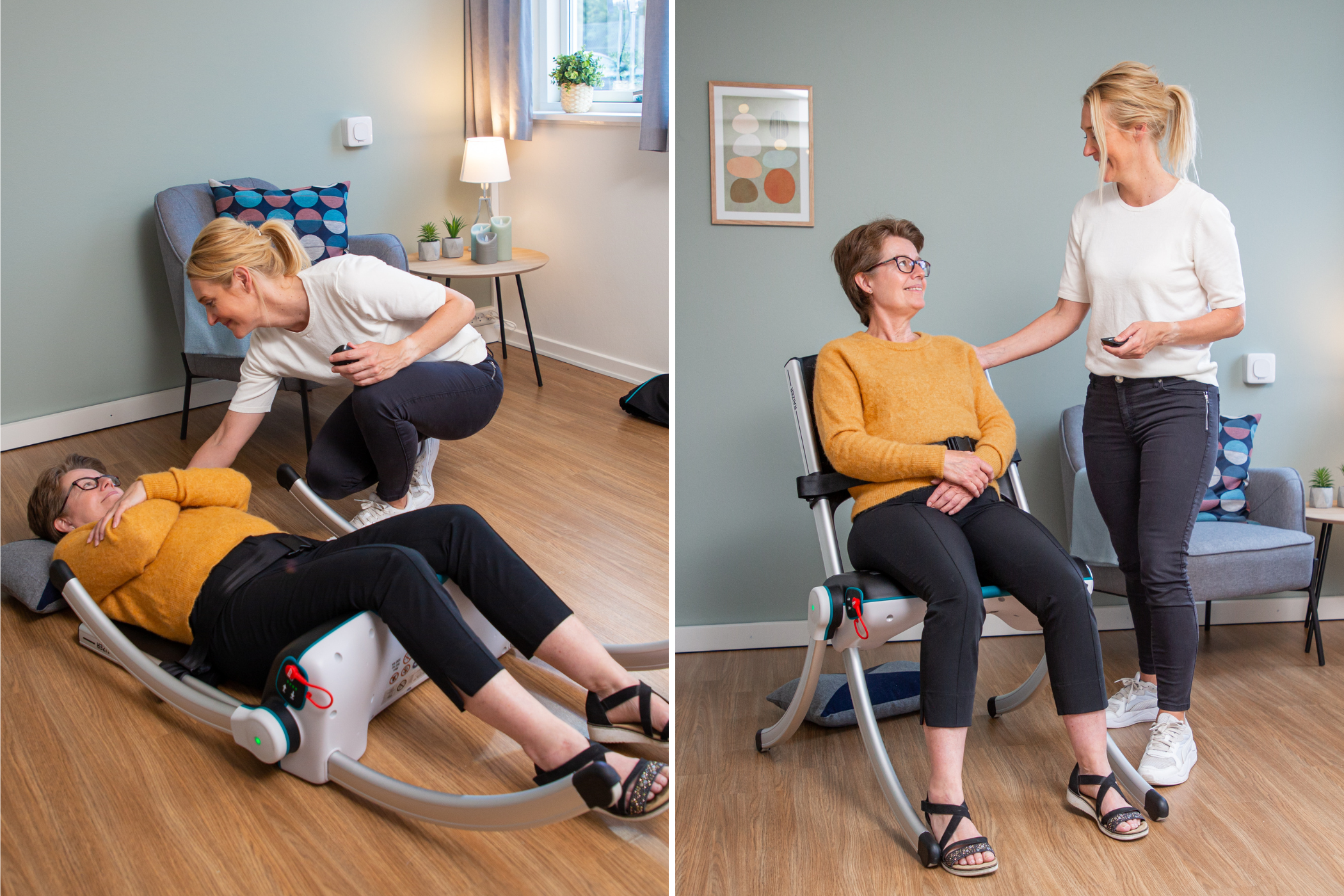
Other products that assist post-fall include lift cushions and the Levantar Manual Floor Lift that can reach the ground and lift patients all the way up, making it easier to get them back on their feet or on a bed.
While providing extra stability and purchasing the necessary tools is important, it’s also ideal to remove hazards that may cause tripping in the first place. This includes rugs that can easily move, awkwardly placed furniture, and more. Non-slip mats can also be placed around the home, particularly when tile and slippery surfaces are present. Making these simple, but small changes can have a big impact.
It’s also important to ensure that your elderly loved one is getting proper medical care and attention, scheduling regular check-ups to monitor for balance and mobility. Get more tips on fall prevention for seniors, implementing elderly fall recovery techniques, and creating a more comfortable environment for all. Plus, be sure to take a look at 101 Mobility’s additional mobility and accessibility solutions.
The Power’s in Your Hands
Falls are now the leading cause of injury and death among those who are 65 or older in the U.S. This can be a jarring fact, but there are many ways you can prevent elderly falls and techniques you can learn to help your loved one if a fall does occur. Learning how to safely lift an elderly person who has fallen can be critical—and can even save their life. When possible, rely on extra safety tools, and no matter the situation, try to remain calm and patient, providing support at every step of the process.
You don’t have to go it alone and we’re here for you every step of the way. Our team is ready to offer senior safety tips and solutions that can make a big difference in your life—and the life of your elderly loved one. Remember, while a senior fall can be scary, it doesn’t have to be stressful. Preparing for this situation can make all the difference—and you’re even more capable than you think. Explore our mobility aids that help with preventing elderly falls or contact us today for extra help.
